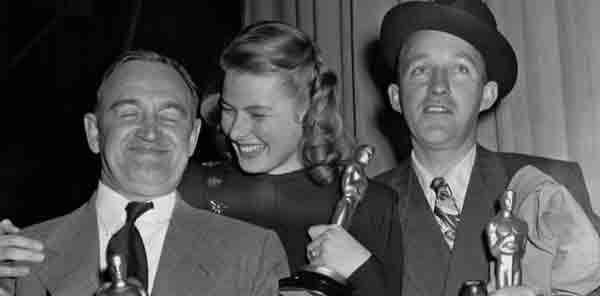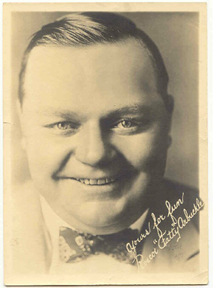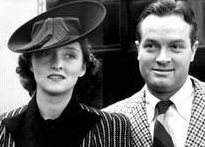We enjoy the occasional award show, but Oscar night is our favorite because of the history and tradition associated with it. The Academy Awards debuted way back in 1927; 2015 marks the 87th presentation of these storied statuettes.
As we post this, the chances are pretty good that you are prepping your home prior to the arrival of guests for your Oscar party or perhaps making a batch of guacamole (hopefully, you’re using Boris Karloff’s recipe) to take to a friend’s Academy Awards gathering. If so, we’ve got the perfect hour’s worth of listening to accompany those chores.
The 17th Academy Awards ceremony, held on March 15, 1945, at Grauman’s Chinese Theatre, was the first to be broadcast nationally on the radio (on the Blue Network, the precursor to ABC) and also the first to feature clips from the various nominated pictures. And what pictures they were! Double Indemnity, Going My Way, Lifeboat, Gaslight and The Miracle of Morgan’s Creek are just a few of the classic pictures that were nominated for the top awards that year.
Host Bob Hope was in top form that night, and the proceedings came off in a mere 66 minutes. And you, dear reader, can experience that magical evening anew by clicking the link below.



 The lovely and talented
The lovely and talented 
